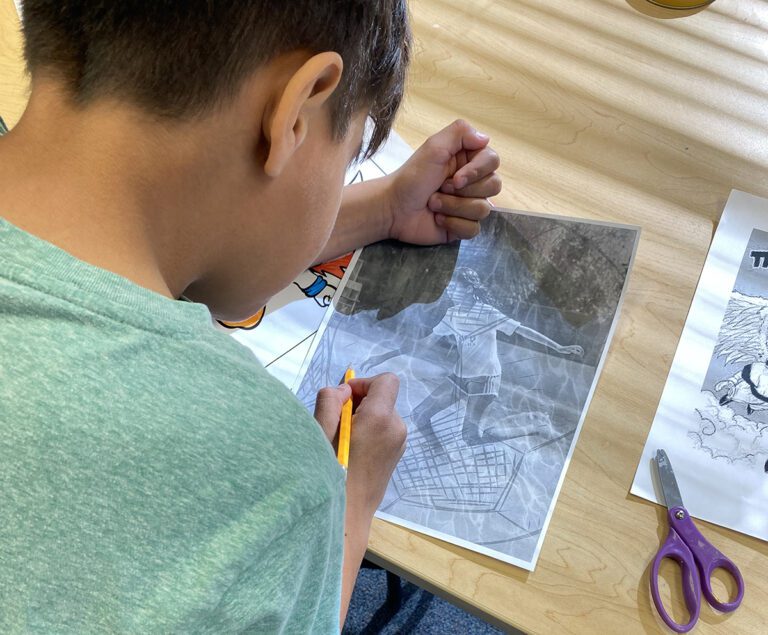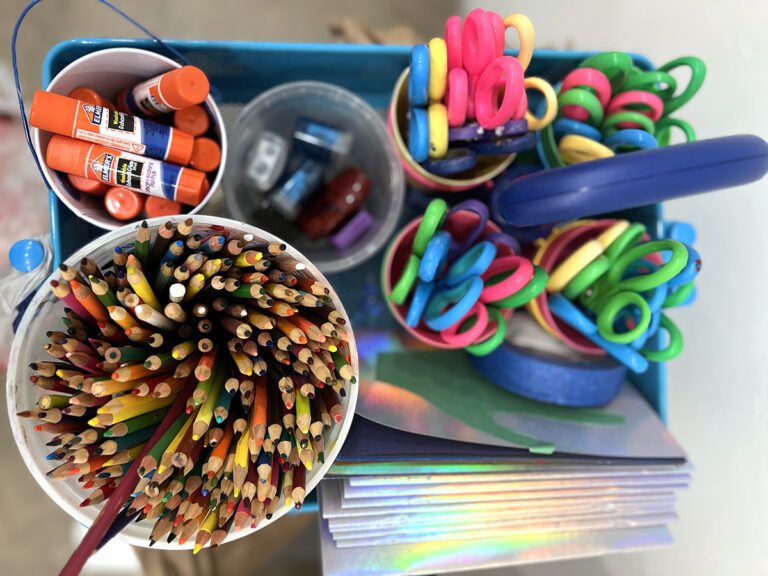As summer approaches, so does that annual day of enthusiasm, sweat, and sunscreen—elementary field day. Students live for this moment. Shouldn’t we live for it too? Instead of waiting to be assigned a station by your PE teacher buddy or a well-meaning parent volunteer, take your field day destiny into your own hands. Of course, there are several ways to be involved in the planning process that can tap into your creative skills. You can volunteer to design t-shirts, prep materials, or design flyers to inform families. But how can you best use your talents on the actual day of fun?
Offer one of these suggestions to get involved in your field day as another school year draws to a close.
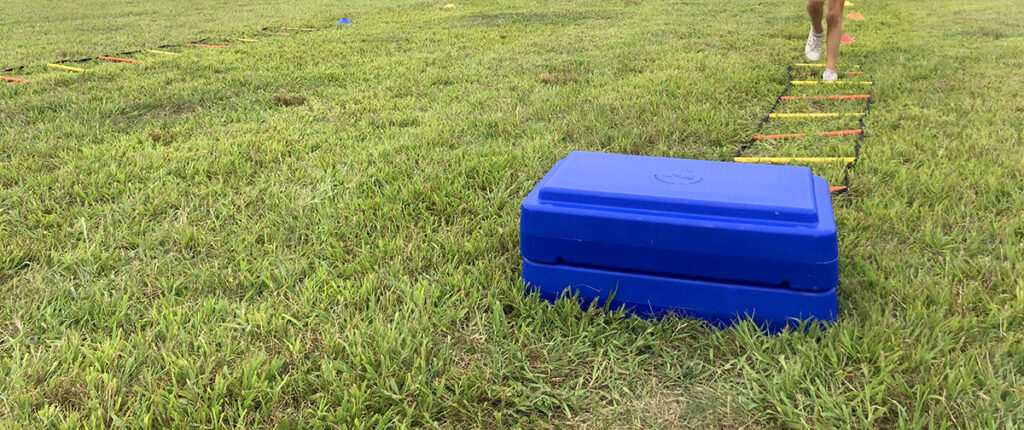
1. Murals
Before field day arrives, prep large paper murals for students to fill in the spaces with either paint or marker. Use these large paintings to welcome students back to school in the fall, or use them for a special event for the following year. Students can rotate into this station just like any other activity during field day. Set up large tables with paint outside. Consider images reflecting your school’s core values, name, a mascot, or bold abstract imagery.
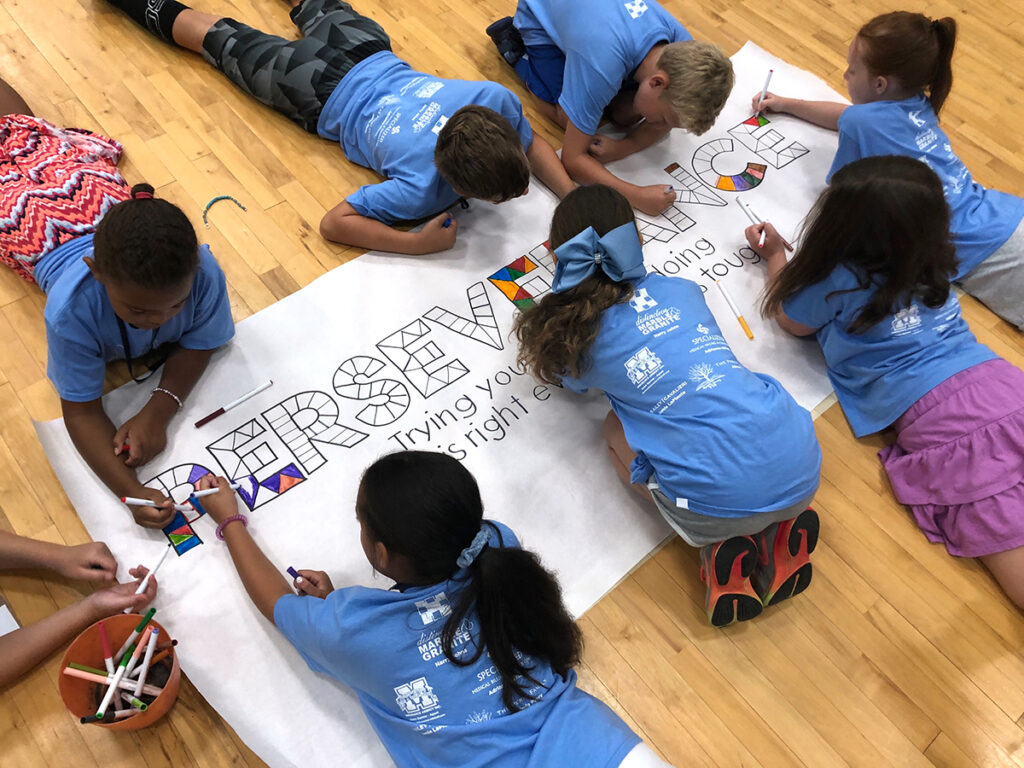
2. Chalk Work
Students can free-draw with chalk to cover the playground asphalt with color. Sometimes, a more focused approach can make the station more productive and meaningful. Pre-draw words or images for students to color in with sidewalk chalk. Sketch out messages to send the students and staff out into the summer. Or, acknowledge those fifth-graders going off to middle school, or compose a thank-you to the hard-working staff. Have a bucket of water nearby to clean those chalky hands before students head off to the next station.
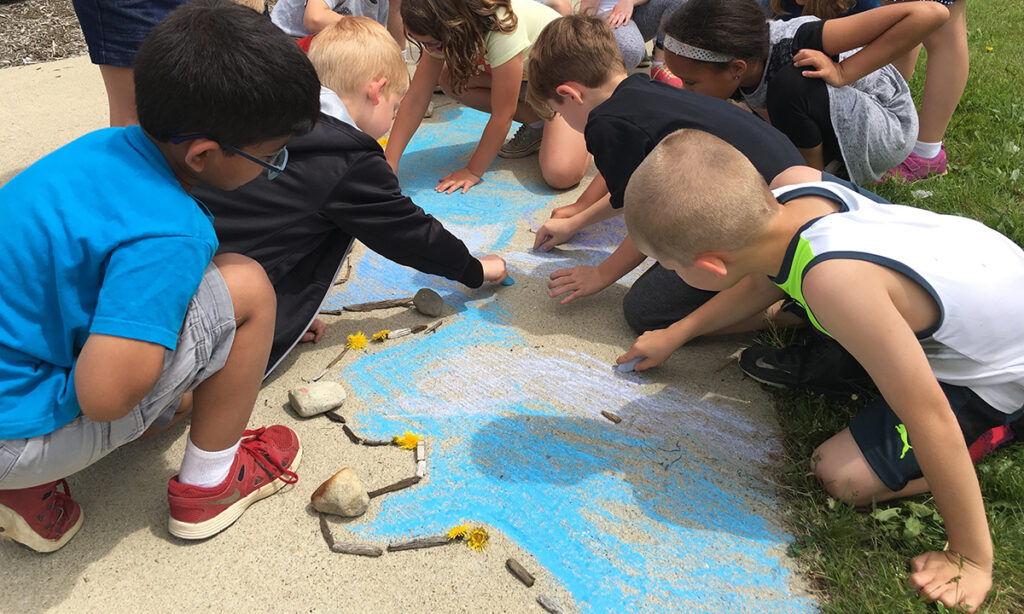
3. Face Painting
This one is not for everyone. If painting the faces and hands of students intrigues you more than monitoring kids on large inflatables, then get out those face paints. You will want to create a visual of options for students to select from. Remember to keep it simple, and be sure the very next rotation after they get a painting from you isn’t a water station. From personal experience, it will all seem so futile if they immediately start throwing water balloons at each other after getting an ice cream cone painted on their face.
4. Explore Architecture
Take the opportunity to let students engage in creative play as they explore architecture. Set up a station with wooden blocks, cardboard boxes, pool noodles, and other materials with architectural potential and see what happens. Students think creatively and work collaboratively in an experience that doesn’t require traditional art or field day supplies.
5. Guess the Drawing
This classic game is perfect for field day. Have strips of paper with one school-related word on each slip. Students in two teams take turns drawing for their team, who must guess the correct answer. This potential field day station can be a moment for students to rest and hydrate while keeping their minds and creativity active. Is rain all of a sudden a problem? This activity is a great way to keep the fun going if everyone has to head indoors unexpectedly.
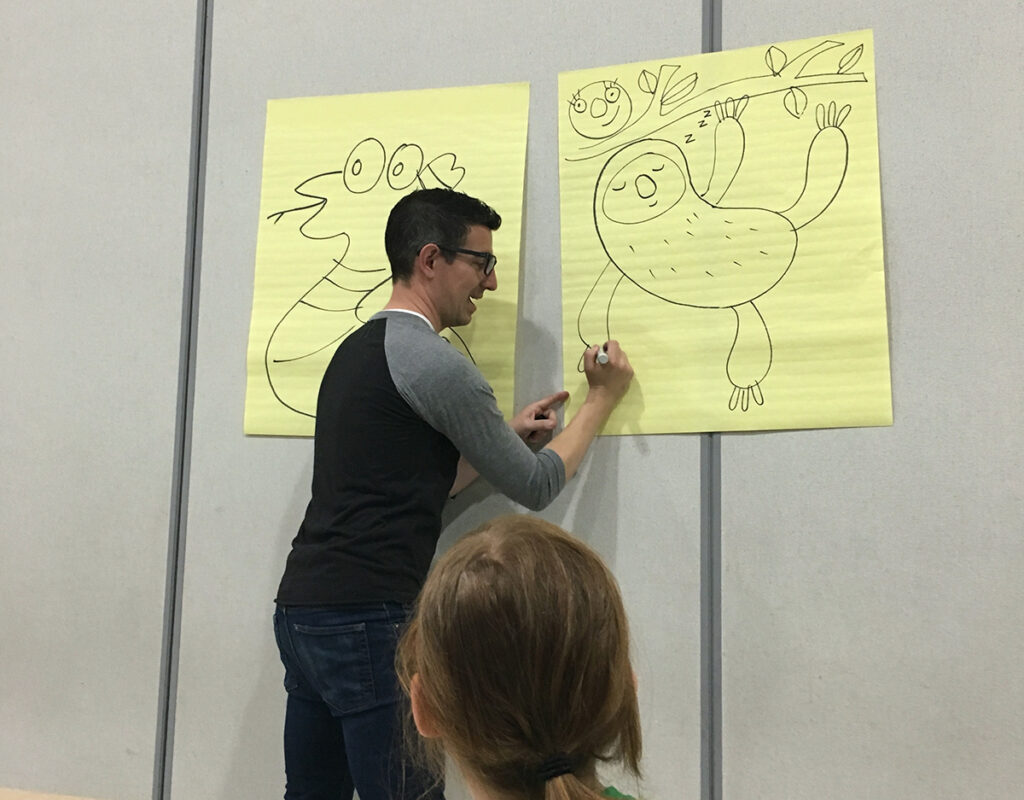
6. Nature Constructions
Use wood disks, sticks, flowers, or long grasses to form temporary installations. Continually reuse the materials for other constructions. Read about this activity and others like it that do not require traditional art materials in the article 10 At-Home Creativity Prompts That Don’t Require Traditional Art Materials.
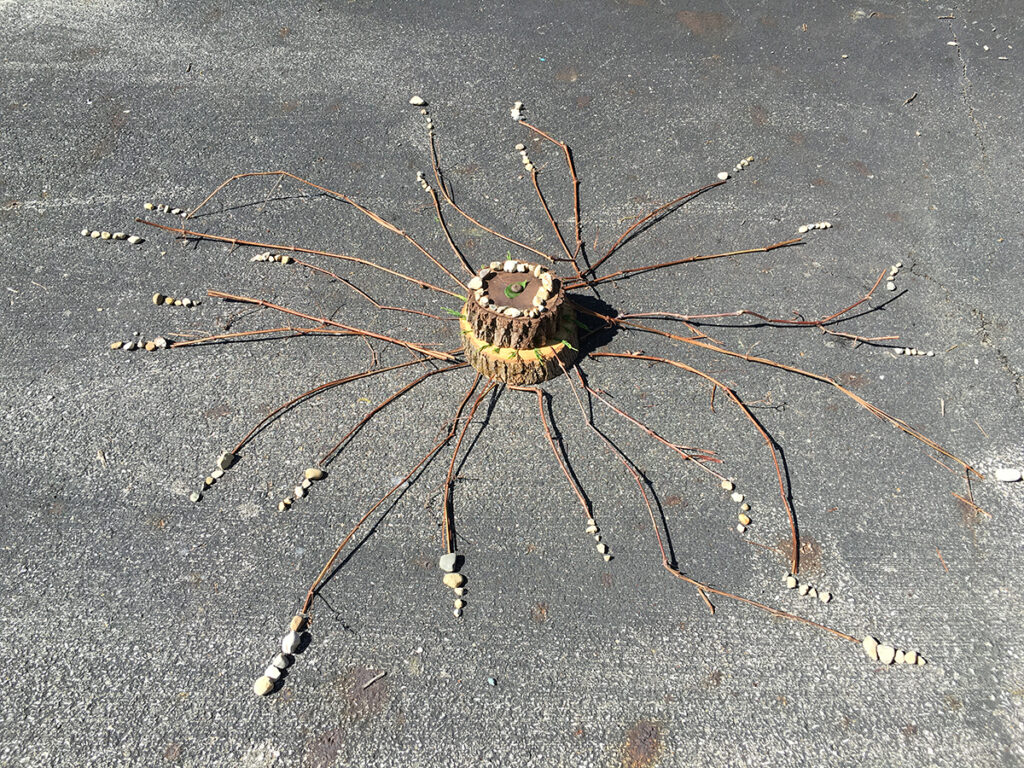
7. Sun Printing
Sunny, late spring days are perfect for sun prints or simple cyanotypes. Art teacher Rob Jones suggests purchasing sun print paper for field day. Establish a collection of found and natural items suitable for printing on this light-sensitive paper. Be sure to have a way to rinse the papers in water (a necessary stage of the process) and a place to hang the images to dry to keep them from blowing away. Though this material comes with directions regarding how much time an exposure takes, pull some test prints ahead of time. This will help determine how long the paper should sit out in the sun before it becomes over-exposed in your specific location.
8. Mini-Golf
Support the PE teacher in reimagining the entire concept of a field day with a focus on creativity and ingenuity. Last year, elementary PE teacher Renee Woodtke adapted her field day into a community event on a spring Saturday morning. Her students took part in a massive game of miniature golf. Students, staff, and families signed up to provide a golf course at the school that included ramps, monsters, and giant foam unicorns. Families played together, kept score, and enjoyed the challenges set before them. You can work with students to create a single golf hole as a station for field day or an entire course. You can also work with local high school art students to design and build a challenge for their younger counterparts.
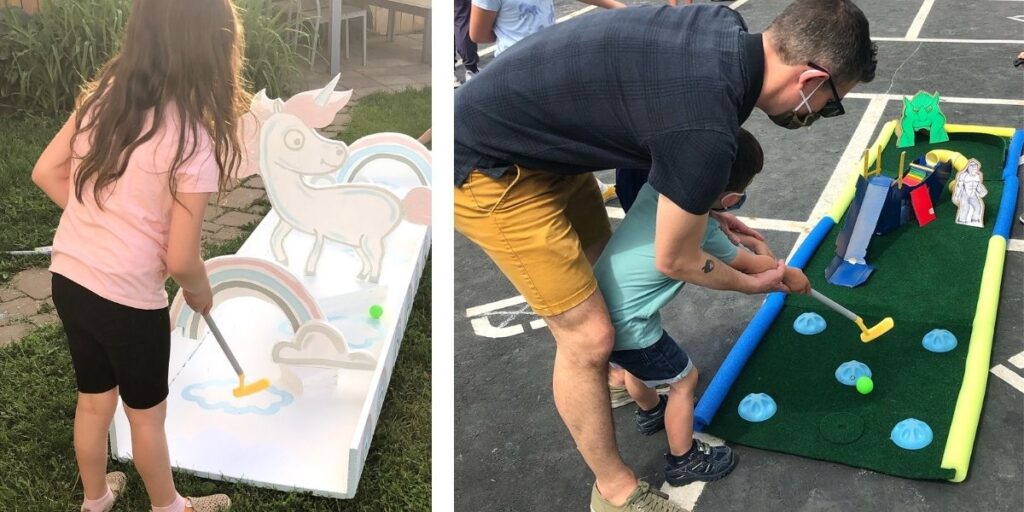
9. Action Art
Are you apprehensive about making large action paintings in the art room during the school year? Take the action outside for quick cleanup and a shortened dry time in the sun. Roll out a large piece of bulletin board paper for each grade level. Start with colored paper to provide a vibrant starting point for students. Provide each class in a grade level a different color of tempera paint in a condiment bottle. Students take turns squirting paint on the paper using whole-body movements. Use a whistle to signify that a student’s turn is over and to pass the paint so you aren’t yelling over your energetic young artists. Display the paintings in the building to start the next school year. Greet students and teachers with color and memories of the previous field day’s fun.
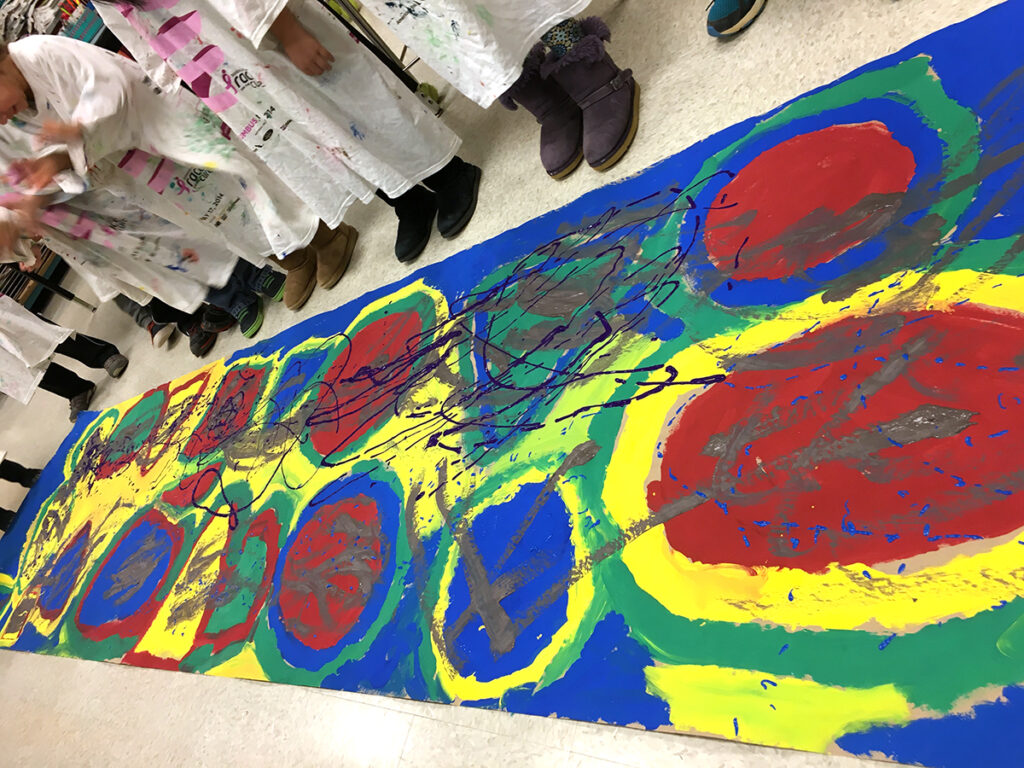
10. Just Have Fun!
Give in to the joy of field day and try something you would never normally do. Does sitting in a dunk tank all day not sound incredibly enticing? (Been there and loved it.) Then why not suggest a relay race, a dance-off competition, or monitor a water balloon battle? The enthusiasm students experience is contagious if you open yourself up to having fun.
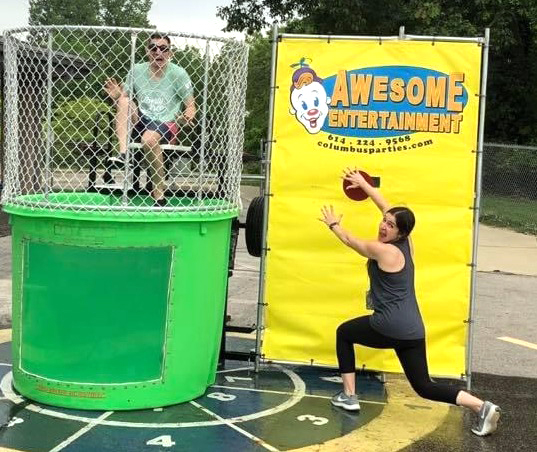
Field day is a much-anticipated event in most elementary schools, and the involvement of the art teacher can vary from school to school. This day is an opportunity to have fun, build memories, and leave a mark on your students’ last impressions of elementary school. With a little creativity and enthusiasm, art teachers can go beyond supporting field day. Art teachers can use their unique skill set to enhance and invigorate the experience.
Who do you need to contact at your school to get involved in field day?
What special materials do you need to implement your field day station?
What do you want your students to remember from this year’s field day?
Magazine articles and podcasts are opinions of professional education contributors and do not necessarily represent the position of the Art of Education University (AOEU) or its academic offerings. Contributors use terms in the way they are most often talked about in the scope of their educational experiences.


